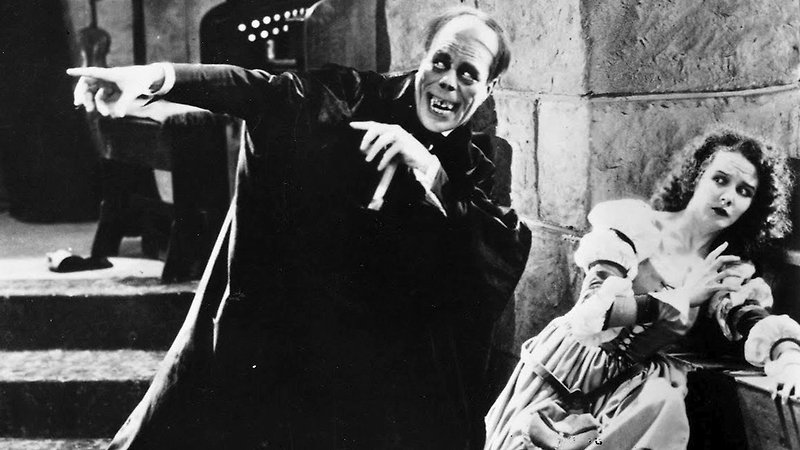A Live Cinema performance of one of the greatest hits of the silent era and an early benchmark in movie horror, with a thrilling orchestral score composed by Carl Davis. (1925)

“If I am a Phantom it is because man’s hatred has made me so.”
Screened as part of NZIFF 2006
The Phantom of the Opera 1925
Orchestral Live Cinema returns to the Wellington Film Festival! Thanks to the support of the Wellington City Council and The Opera House, the Film Festival and the Vector Wellington Sinfonia are able to collaborate once again. We present a Live Cinema performance of one of the perennial popular hits of the silent era, with a thrilling orchestral score composed by Carl Davis. An early benchmark in movie horror, still imitated 80 years later, The Phantom of the Opera was directed by Auckland-born Rupert Julian. Restored in 1992, this definitive version includes the full colour Masque of the Red Death sequence that had Jazz Age audiences gasping in their seats.
It’s a strange if oft-told tale: lovely Christine, an understudy at the Paris Opéra, believes the melodic voice coming through the walls of her dressing room is a guardian angel. In fact it is mad Erik, filled with love for her – and vengeance for anyone who gets in her way. He’ll bring the mighty chandelier crashing down on a packed theatre if the leading singer does not make way for his innocent protégé. Eventually Erik takes Christine down through the catacombs to his underground lair where she sees his true face, that of a living skull, in one of the most unnerving moments in silent-era cinema. On their trail is Raoul, her true love, dashing to save his lady as Erik forces her to make a terrible choice that could have fatal consequences for the patrons of the Opéra…
The story structure is episodic, and Julian’s direction is often formulaic, but the huge sets and cinematography create a wonderful atmosphere, and Lon Chaney towers over the film’s shortcomings. Fright in this film comes from the darkness, the lurking shadows that play on the superb sets, from Chaney’s wonderful performance as the dejected madman – and from the music. There have been many subsequent versions of Gaston Leroux’s novel, but none have surpassed this 20s classic. — BG
“The highs are way up there with the best in the tradition of Gothic fantasy: Chaney’s best ever phantom, his face scarred to hell by acid, unmasked at the organ by the timorous heroine; the phantom stopping a costume ball when he appears as the Red Death; the phantom shrouded in the most romantic cape ever seen, perched on the top of the statue of Apollo to eavesdrop on the lovers. And the sustained crescendo of the end is still unrivalled.” — Tony Rayns
Rupert Julian, the director of Phantom, was born in Auckland in 1889 and moved to the US at the age of 24, working as a stage and screen actor. Turning to directing in 1915, his output was unremarkable until he was assigned to complete Merry-Go-Round in 1923 after Erich von Stroheim was fired from it. Of his many silents, Phantom is by far the best, and the best known, though several other hands, including Chaney’s, took a turn in its direction. He made only two films after the advent of sound and died after a stroke in 1943.
Carl Davis is the doyen of contemporary composers for silent film. His big symphonic scores for The Wind, Our Hospitality and The Wedding March have thrilled Wellington Live Cinema audiences. His music for Phantom draws liberally from Gounod’s Faust, the opera we see performed in the movie.
Kenneth Young has established himself as a passionate and skilled interpreter of the Romantic and 20th-century repertoire. Young took up the position of Principal Tuba with the NZSO in 1976. He was appointed the orchestra’s Conductor in Residence early in 1993. In 2001 he resigned from the NZSO in order to pursue his conducting and composing career full time. His engagements with the NZSO and the New Zealand Chamber Orchestra have included CD recordings of orchestral works by Edwin Carr, Gareth Farr, Douglas Lilburn, Lyell Cresswell and David Farquhar. He regularly conducts seasons with the Royal New Zealand Ballet. He has also been a member of the music faculty at Victoria University of Wellington since 1988.